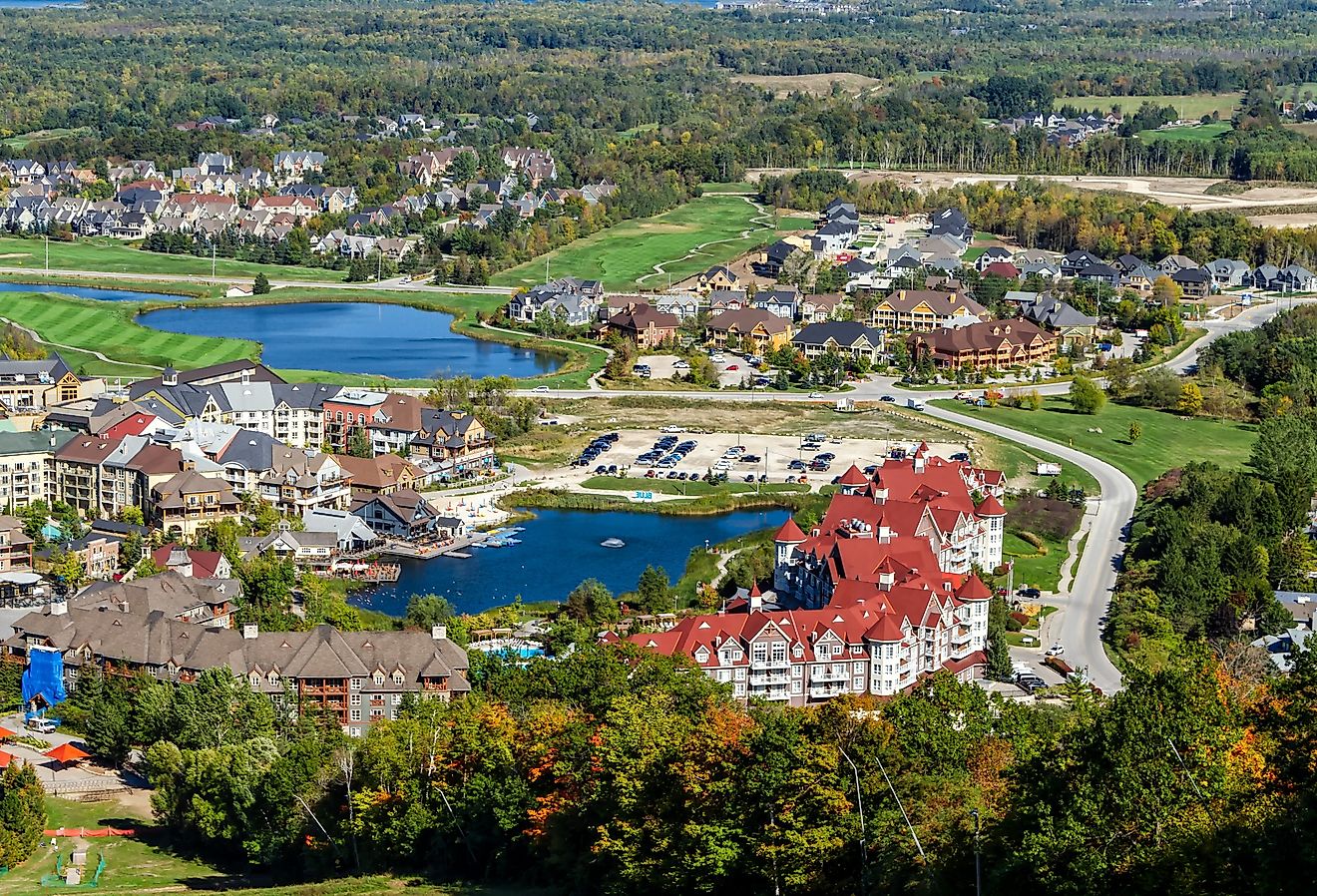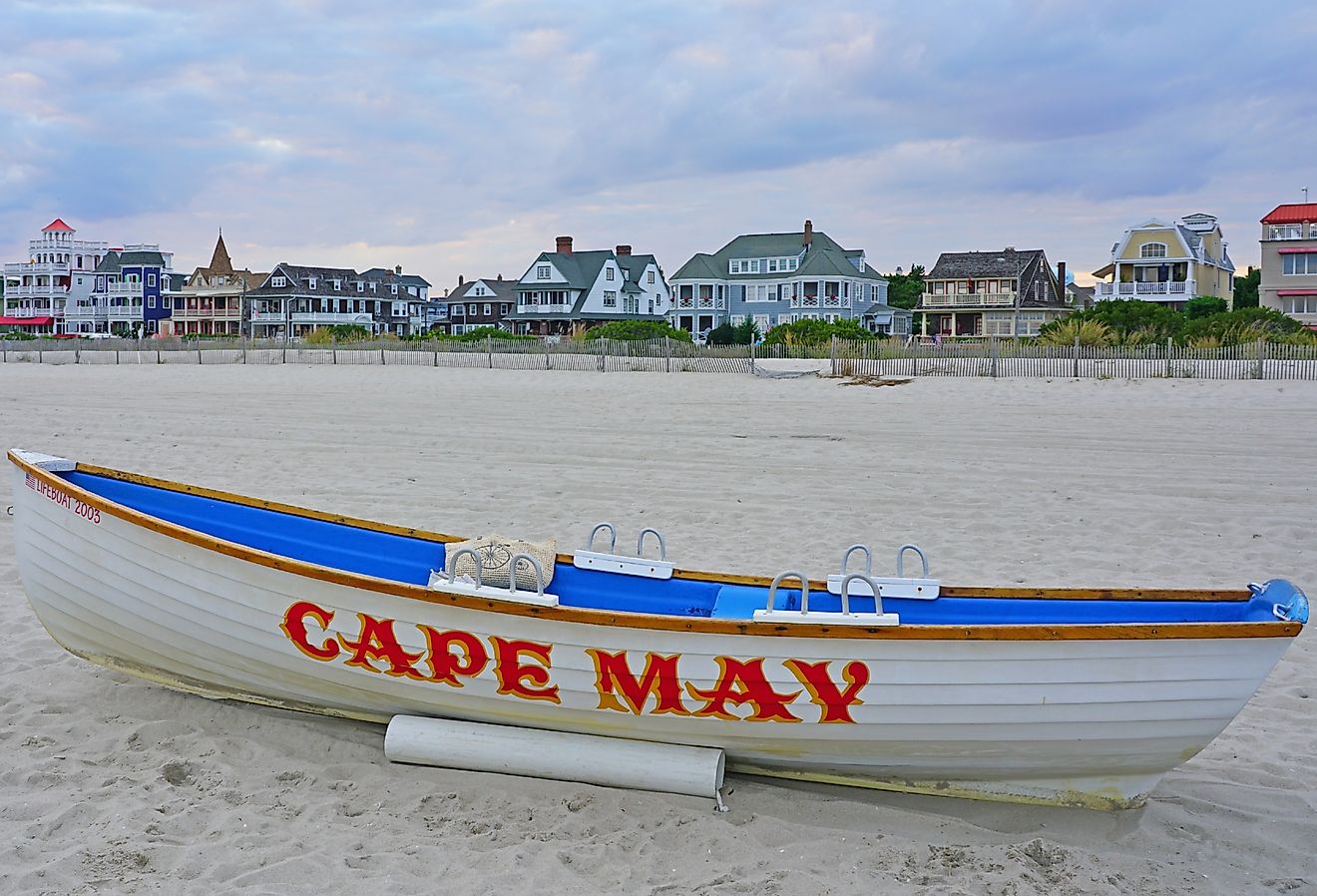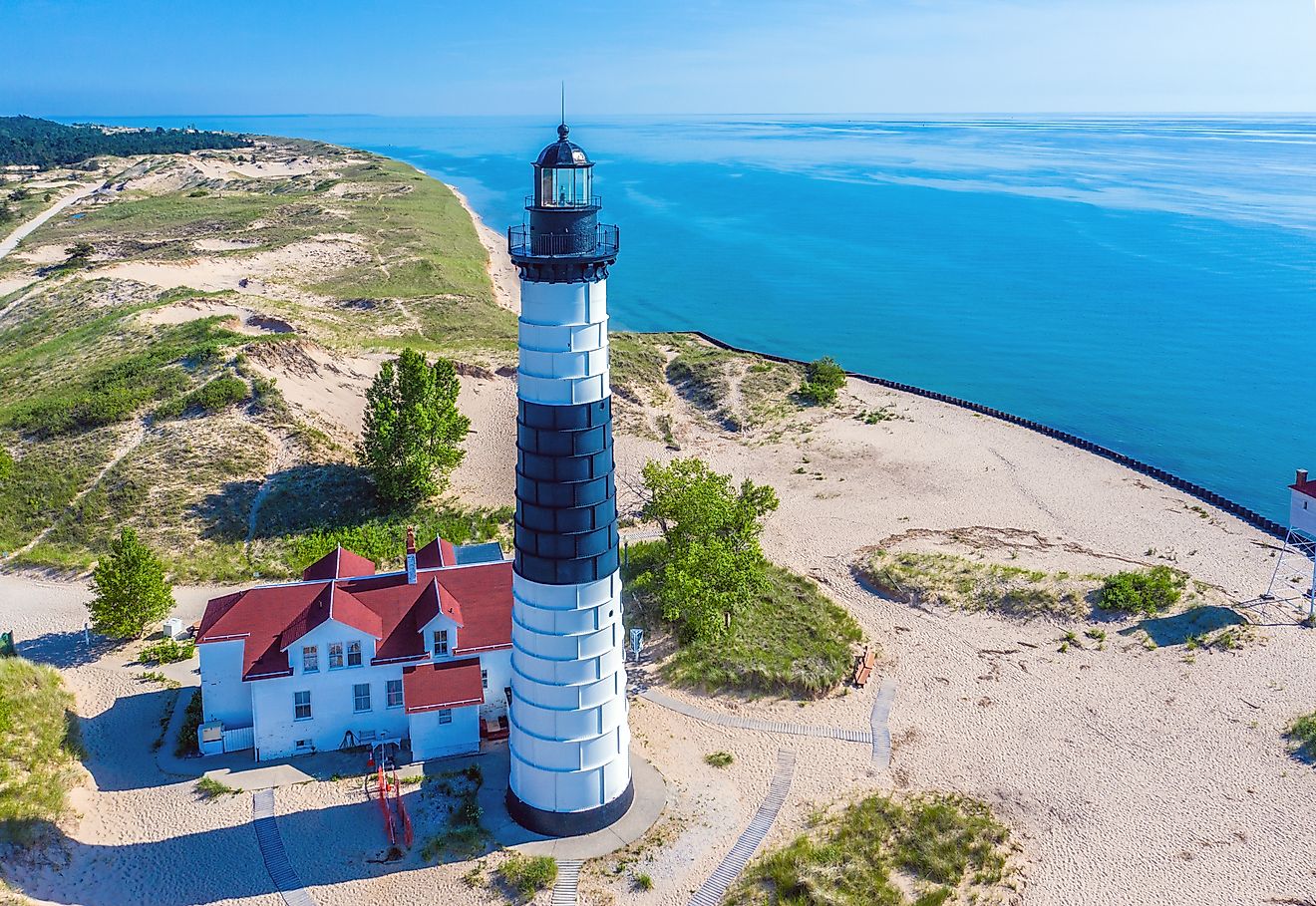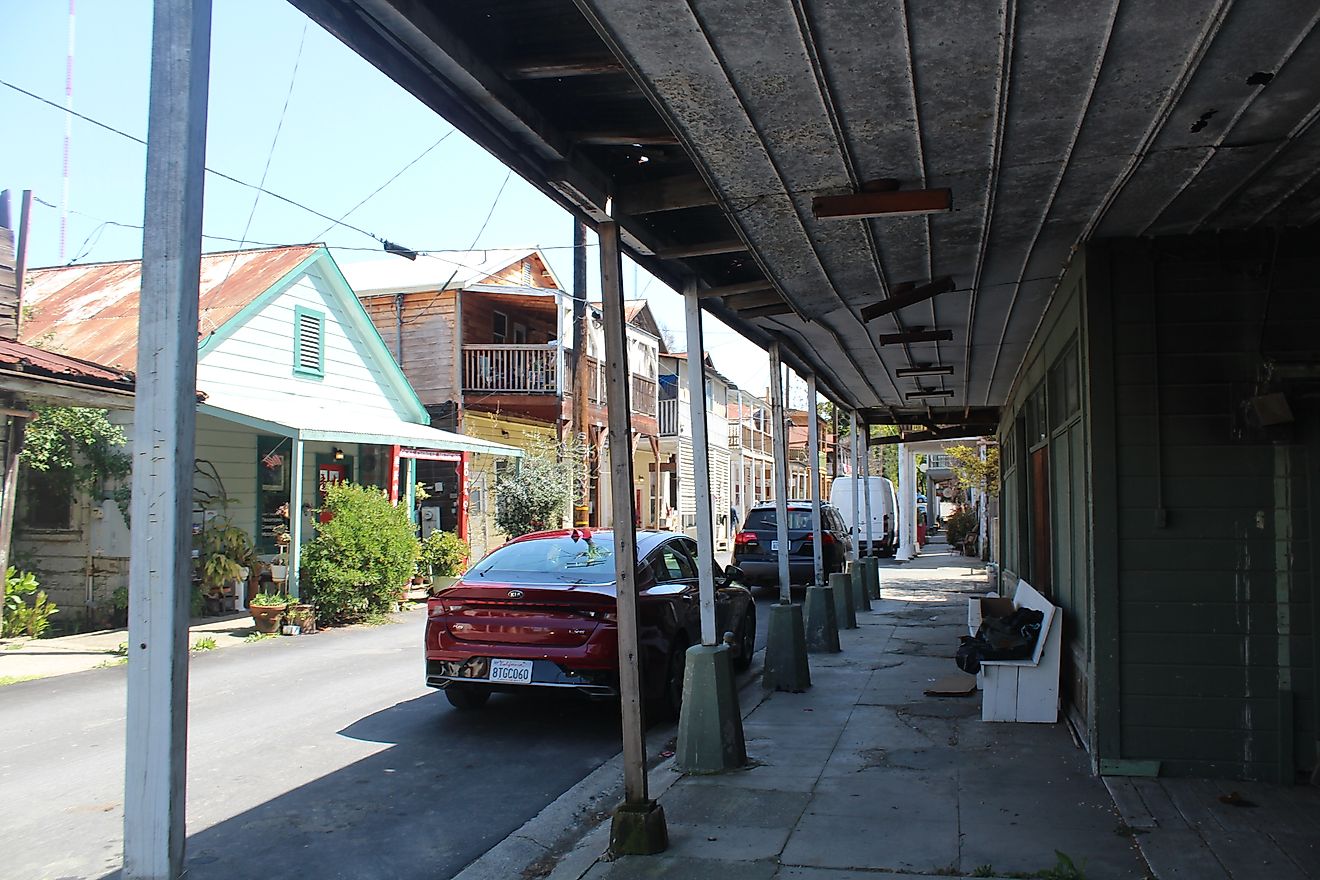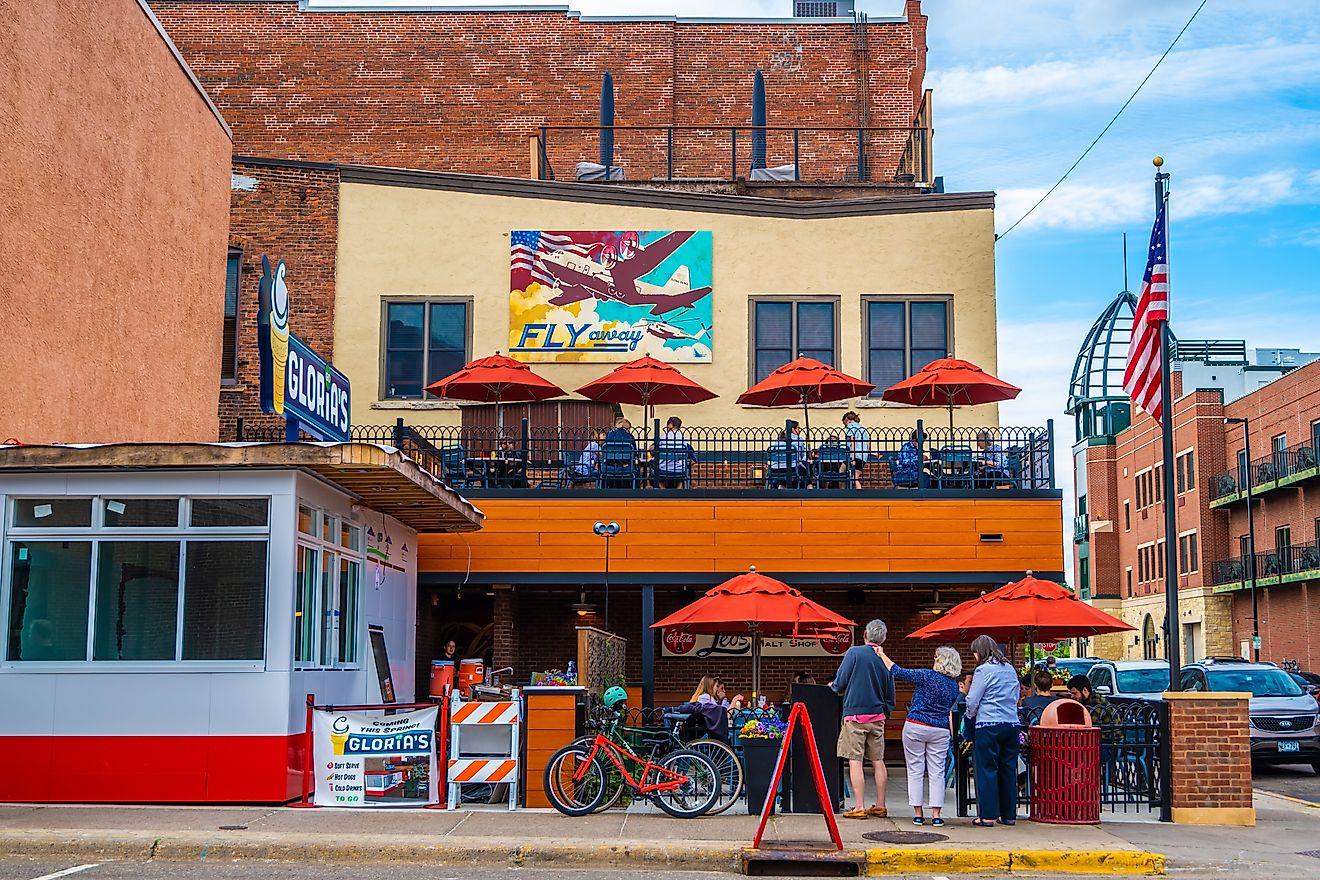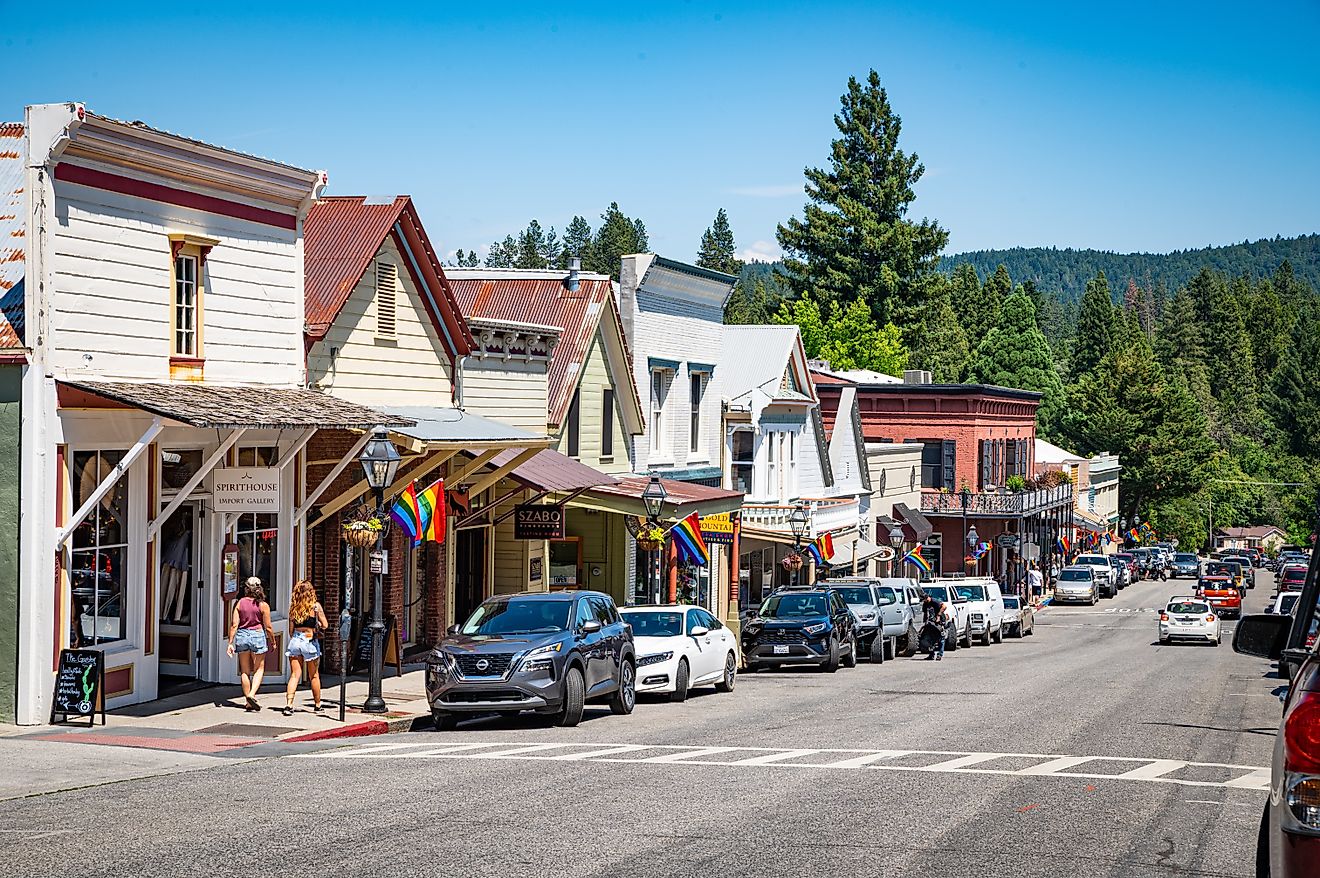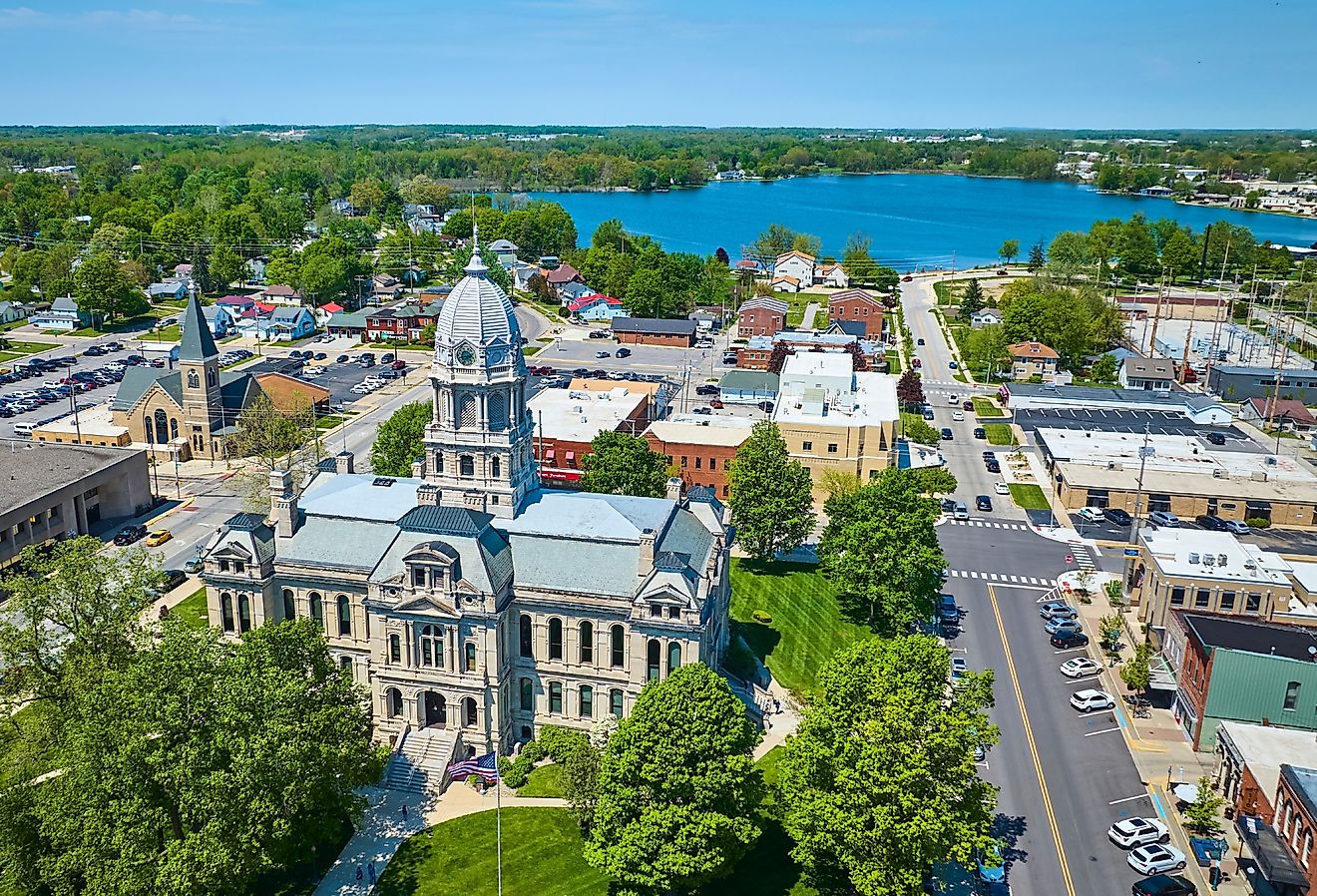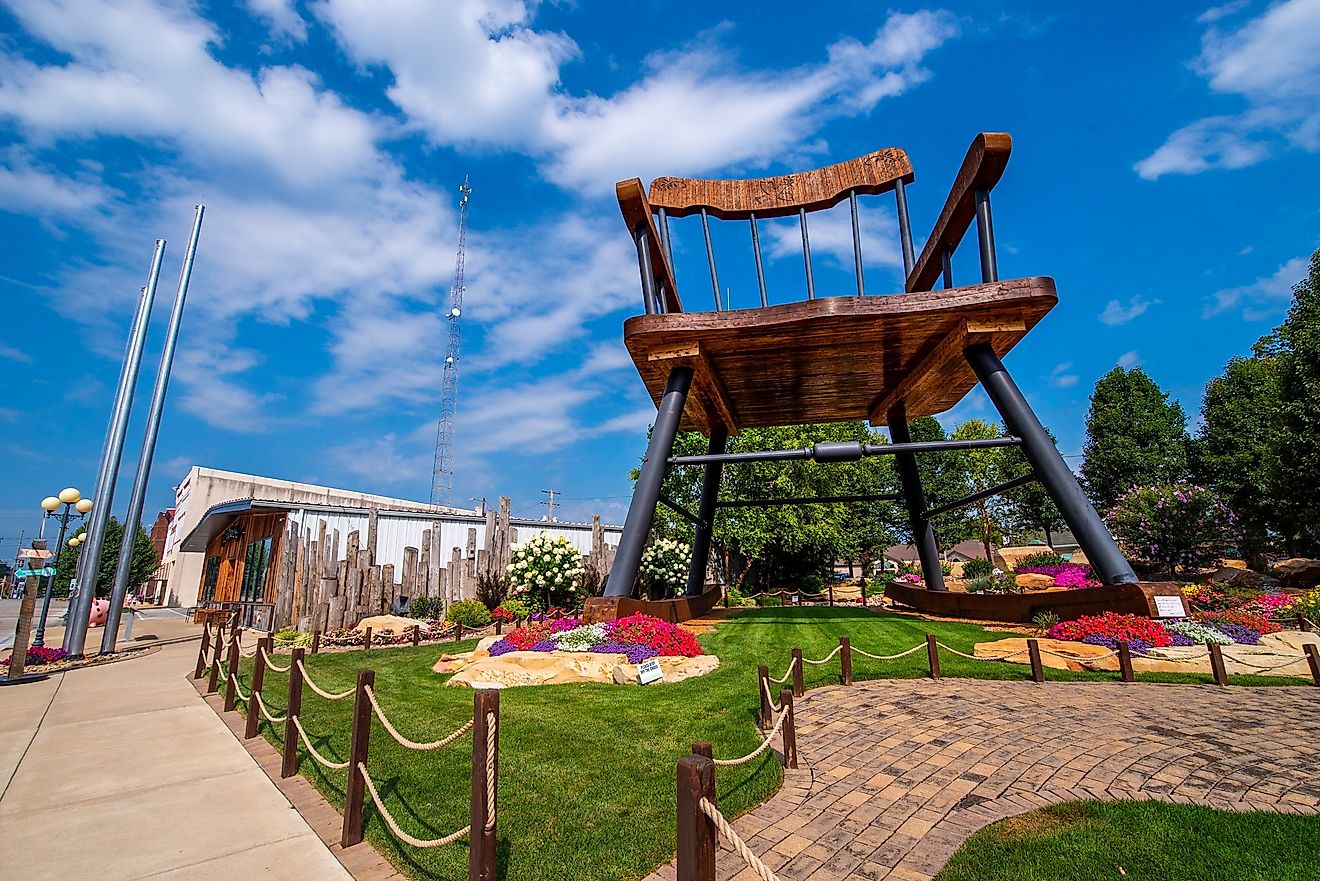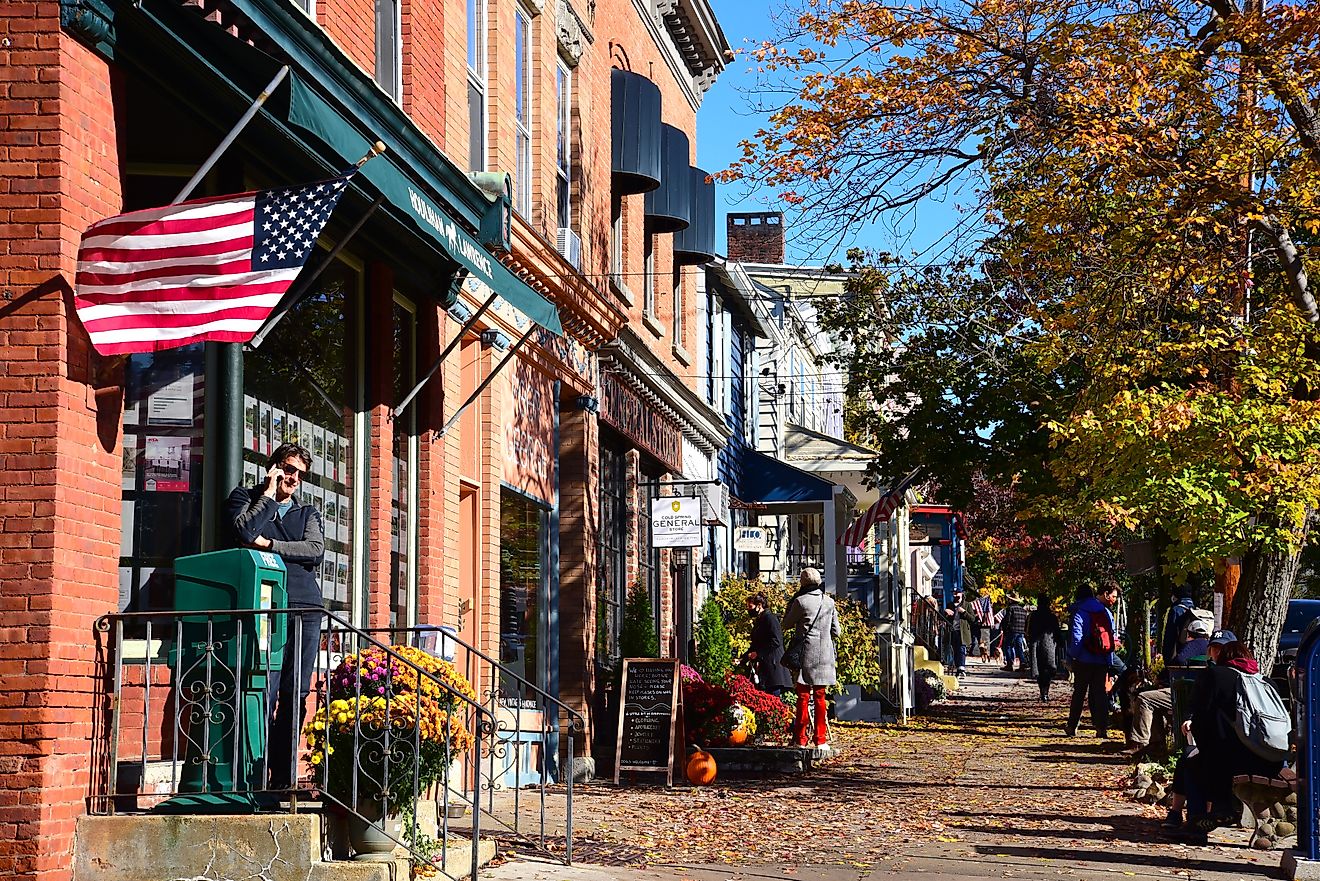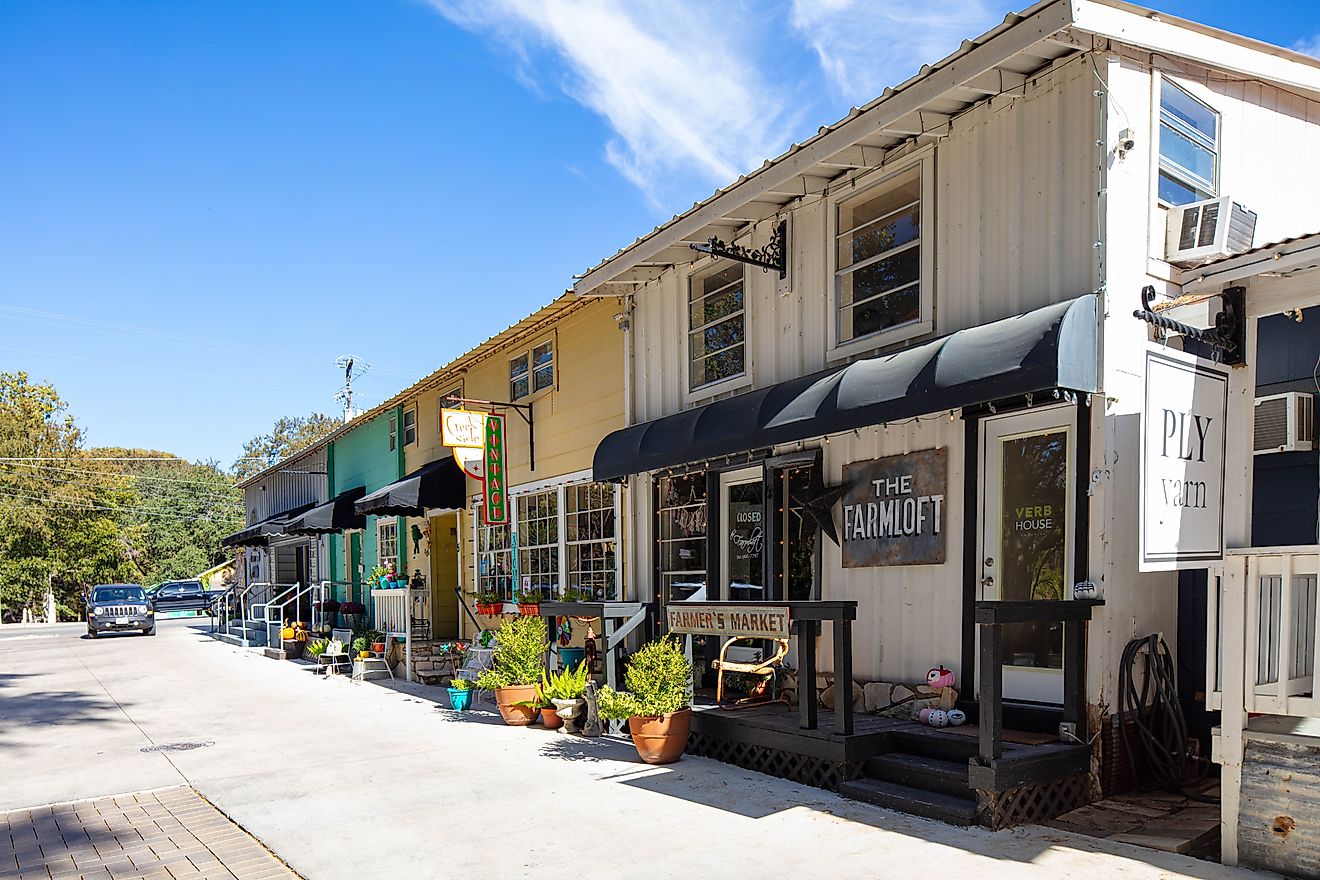
11 Oldest Founded Towns To Visit In Indiana
As its motto suggests, Indiana is at "the crossroads of America." Though being the smallest state west of the Appalachian Mountains, Indiana is an integral part of the American Midwest, bordering states like Michigan, Ohio, Kentucky, and Illinois. Indiana's charm lies within its oldest-founded towns and cities, which are ideal for a visit any time of the year. Many of these locales remain standing after centuries, even during times when Indiana was transitioning from a territory to a US state!
Oldenburg

Oldenburg of Franklin County is known as one of Indiana's oldest communities and was first settled by William George of Pennsylvania in 1817. Throughout the latter half of the 19th century, the town's bustle began to rise with the arrival of German immigrants. To pay homage to Germany's dukedom of Oldenburg, these immigrants named the town "Neu Oldenberg." Eventually, the town was incorporated into "Oldenburg" by 1869.
Oldenburg is nicknamed "The Village of Spires" for a reason; it has plenty of steeples attached to its churches and convents! Take a trip to Oldenburg to see the grand cathedral of The Chapel of the Immaculate Concept (attached to the Sisters of Saint Francis). Otherwise, there is plenty of architecture to discover at Oldenburg's Historic District, a National Register of Historic Places with 115 homes, 106 buildings, two contributing sites, and six structures. Many of these buildings were even built before 1900!
The town is also rich in German heritage and ancestry. Every July, the town hosts the Oldenburg Freudenfest (or the Friend Festival)! Otherwise, the town offers a one-of-a-kind collection of boutiques. Find interesting antiques at Kutschenhaus or enjoy authentic German fare at Oldenburg's Brau Haus.
Troy

Comfortably sitting along the Ohio River, Troy is a picturesque town with deep roots. Indiana's second-oldest town was first settled in 1804 by settlers from Virginia, Kentucky, and Maryland. In the early 19th century, the community was a vital shipping point along the Ohio River. Though Troy was incorporated in 1837, this union lapsed for 20 years until its reincorporation in 1859.
Many of Troy's attractions feature calming and picturesque views of the Ohio River. There is access to the Ohio River through the Troy Boat Dock (also known as the Troy Boat Ramp). Alternatively, visitors can admire river views while visiting Christ of the Ohio, a statue of Jesus Christ that stands at 11 ft 4 inches on a concrete base. Next to Christ of the Ohio lies the Troy Veterans Memorial Hall, a memorial dedicated to honor veterans.
Fort Wayne

Fort Wayne in Northeast Indiana comfortably sits at the confluence of the St. Mary's and St. Joseph's rivers (at a point where they form The Maumee). This Allen County city is located 121 miles northeast of Indianapolis and is the second-largest city in the state. Fort Wayne goes by plenty of nicknames, including Summit City, the All-American City, and the City of Churches.
Boasting a rich Frontier history, Fort Wayne was founded on October 22, 1794. After General Anthony Wayne's victory in Ohio's Battle of Fallen Timbers, he traveled west towards the junctions of the three rivers: St. Mary's, St. Joseph's, and The Maumee. There, in 1794, Fort Wayne was established (subsequently named after him) and was under the authority of the US government. In 1816, a third fort was built in the town, followed by other structures, including Fort Wayne's first school in 1825 and the canals that extended 425 miles from Fort Wayne toward Evansville.
To history buffs, Fort Wayne is akin to a kid in a candy store. There's lots of history to be unearthed in this historic town, whether it's perusing Abraham Lincoln memorabilia at the Lincoln Library and Museum or stopping by The Old Fort along Spy Run Avenue. Visitors can also check out Johnny Appleseed's gravesite at the Johnny Appleseed Park, which also hosts the Johnny Appleseed Festival every Fall!
Lafayette

A few hours away from Chicago and Indianapolis lies the town of Lafayette in Central Indiana. Originally, tribes like the Wea, Miami, Potawatomi, Shawnee, Wyandot, Winnebago, and Delaware settled in the area, living off the beauty of the Wabash Valley. Eventually, in 1717, the French Government built Fort Ouiatenon across the Wabash River, three miles away from present-day Lafayette. The community was a hub for trading, fur trappers, and merchants. Eventually, a young riverman named William Digby bought land along the banks of the Wabash, and In May 1825, he platted the land and named it after the French hero of the revolutionary war, Marquis de Lafayette.
Lafayette was a vital supply center for new settlers in the area. Plus, the arrival of the Wabash and Erie Canal, alongside the railroads in the 1840s and 1850s, connected Lafayette with major markets across Indiana, which further established its reputation as a manufacturing, merchandising, and transportation hub. As Lafayette grew, so did its prominence. In 1859, Lafayette was the site of the first official air mail flight by the US Postal Service. Ten years later, in 1869, the prestigious Purdue University was established in the town. Today, Lafayette is highly regarded as an award-winning community, winning several national awards like the "All American Main Street"!
New Harmony
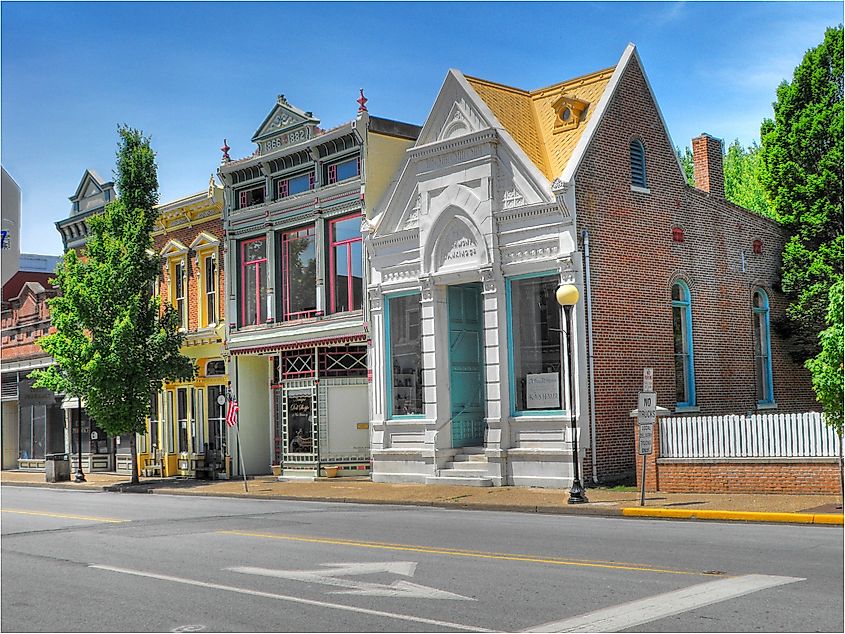
New Harmony is a small historic town along the Wabash River in Southwestern Indiana. Originally, the area that makes up New Harmony was used by prehistoric mound builders and as a camping ground for communities like the Piankashaw people. From 1814 to 1825, Harmonie was built in the area, which functioned as a Utopian community run by Separatists from the German Lutheran Church.
More than a decade later, they sold the town and the lands to Welsh-born industrialist and philosopher Robert Owen. Owen was keen on creating a "perfect society" with accessible education, personal wealth, and the elimination of social classes. He teamed up with William Maclure from the Academy of Natural Sciences in Philadelphia and introduced educational and social reforms in the country.
Visitors of New Harmony will easily find creativity throughout the town, which is easily seen through its art galleries, historic architecture, and other creative outlets. New Harmony's central Historic District also features interesting historical highlights, including preserved wooden architecture originally built by the Harmonists.
Indianapolis

The Capital of Indiana and the largest city in the state, Marion County's Indianapolis is also one of the historic destinations in Indiana. Situated along White River (at its confluence with Fall Creek), the city's area was the former grounds of a Delaware Indian Village and hunting quarters. Eventually, in 1821, the city was founded and finally became a state capital in 1825.
Around the start of the American Civil War, Indianapolis played a role in Union logistics. From the 1860s to the 1870s, the city's population also doubled due to its proximity as a major rail center. Indianapolis' population continued to skyrocket towards the 20th century when activities like meatpacking, metalworking, and automobile manufacturing fueled the city's economy. By 1960, the population grew to nearly half a million people, with this number increasing after the city's governments and Marion County merged into a single entity in 1970.
Today, the historic city of Indianapolis is considered an educational and cultural hub, perfect for family-friendly activities and attractions. Indiana's capital is home to the largest children's museum, the Indianapolis Zoo, and the one-of-a-kind Eiteljorg Museum dedicated to the American West and Native Americans.
The city is also a hub for lovers of professional (and amateur) sports. The National Collegiate Athletic Association's headquarters can be found in the city. Indianapolis is home to three state-of-the-art stadiums for the city's football, basketball, and minor league baseball teams. The city also comes to life every year in late May during the Indianapolis 500 or "Indy 500," a historic automobile race since 1911!
Clarksville

Clarksville sits in Southern Indiana's Clark County, directly across the Ohio River from Louisville. Clarksville was dubbed "The Oldest American Town in the Northwest Territory." Before being established and chartered in 1783, it was an area that was once occupied by Native Americans. In 1778, during the American Revolution, General George Rogers Clark established a post on an island at the Falls of the Ohio (now known as Clarksville), which was protected by 175 trained men. After the war, as acknowledgment for his service, Clark and his men were given 150,000 acres of land north of the Ohio River. He set aside 1000 acres of it to build a community known today as Clarksville.
One of Clarksville's popular tourist attractions is the Falls of the Ohio State Park. In this natural landscape, tourists can see the largest exposed fossil beds dating back to the Devonian Period (or about 350 million years ago)! Currently, the park houses over 270 species of birds and 125 species of fish. It's also historically significant, previously functioning as a natural muster point for settlers moving west on the Ohio River and a natural defense for George Rogers Clark and his troops during the 1778/1779 assault on British forces.
Corydon

Set 25 miles west of Louisville, Kentucky, and part of Southern Indiana's Harrison County, Corydon played a vital role in shaping Indiana as the 19th US state. On June 1816, 43 delegates gathered in Corydon under a large elm tree (or the "Constitution Elm") to draft the first state constitution. The following August, the first state election occurred, where Jonathan Jennings became the elected governor. Until 1825, Corydon functioned as the first state capital until the government moved its activities to Indianapolis.
Travelers visiting Corydon can follow the journey of Indiana becoming a state while in Corydon. The community's highlight includes the original state Capitol Building at the Corydon Capitol State Historic Site, which houses a copy of the 1815 Census. Here, guests can also visit the Constitution Elm, which provided shade to those 43 delegates during their meeting on June 1816.
History can be enjoyed in other ways when traveling in Corydon; the town hosts Indiana's oldest county fair, The Harrison County Fair, every summer. A few miles away lies the Squire Boons Caverns, a living cave discovered by Squire and Daniel Boone in 1790, with Squire using the caverns as a hiding place to escape capture.
Madison
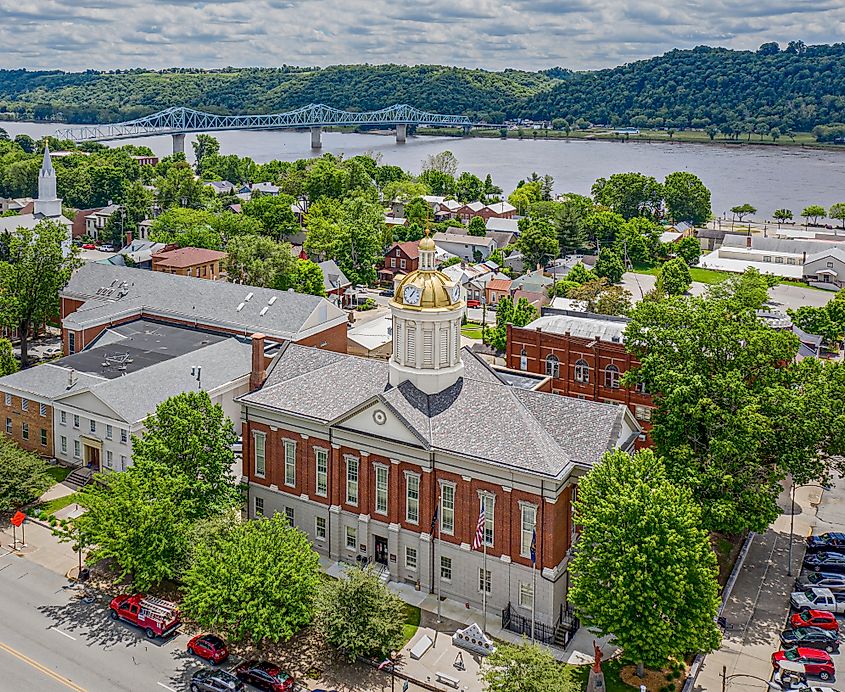
Venture to Southeastern Indiana and Jefferson County to visit Madison, a river city along the Ohio River and opposite Milton, Kentucky. Boasting in its reputation as one of America's most historic river cities, Madison was founded in 1809. Over the decades, the town experienced economic success. In fact, Madison's successful growth of livestock exports earned them the nickname "Porkopolis!" The town's success was also rooted in being the south terminus stop for the Madison and Indianapolis Railroad, the first railroad west of the Alleghenies.
By the mid-19th century, Madison was a booming hub for transportation, industry, and commerce in the region. As other parts of Indiana (including Indianapolis) enhanced their economic prominence, Madison's growth remained comparatively stagnant. Its charm truly emerged when, by the 1960s, there was a growing local movement dedicated to preserving the town's architecture and historic resources.
Madison's downtown core is a history buff's dream come true, recognized on the National Register Historic District with over 1,700 contributing structures and 2 National Historic Landmarks. The town also showcases a collection of preserved buildings, including the 1878 Schroeder Saddletree Factory and antebellum-style houses like the Shrewsbury-Windle House.
Jeffersonville

Travelers heading to Southern Indiana can flock to Clark County, specifically along the Ohio River at the head of the Falls of the Ohio to check out Jeffersonville. Locally known as "Jeff," this historical Indiana city was established in 1786. By the 19th century, Jeff was known for its shipbuilding activities due to its concentration of shipyards built along the riverfront. The town was also a vital site during the Civil War, as it served as a hub for supplies, logistics, and a hospital center for the Union military operations in the West.
Today, Jeffersonville lives and breathes American history, obvious with its historic downtown core, museums, and other attractions. Stop by the Howard Steamboat Museum or the Clark County Museum to learn a little about local history and peruse artifacts from Clark County. In the evening, retreat to a cozy bed at the Market Street Inn Bed & Breakfast in downtown Jefferson, a hotel set inside a restored mansion from the late 19th century. Before leaving Jeffersonville, don't forget to stop by the Schimpff's Confectionary, one of the oldest family-owned candy stores in the US since 1891!
Vincennes

Indiana's oldest city sits in Knox County in Southwest Indiana along the Wabash River. Vincennes was founded in 1732 by French military officer Francois Marie Bissot-Sieur de Vincennes. It was founded as an area of New France, with an established military post along the Wabash River to protect fur trading activities from the British.
Once the fur trade died off, it transformed into an agricultural hub. Over the centuries, the area/military post became the state's oldest continuously functioning settlements. The town eventually changed ownership from France to Great Britain until America took control of it in 1779, thanks to George Rogers Clark and his men.
Travelers exploring Vincennes will discover that it's home to many of Indiana's firsts, being the destination to house Indiana's first Catholic church, the first state county, bank, and medical society. Vincennes also upkeeps the historic Vincennes University (formerly known as the Jefferson Academy), one of the oldest higher learning institutions in the US!
We may currently live in the 21st century, but the oldest towns in Indiana have managed to keep up with the times while preserving their historic charm. Their numerous historical and cultural attractions will surely make a memorable vacation for visitors to these towns.
